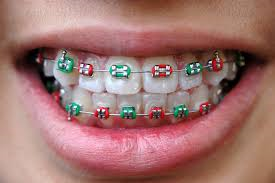After receiving surprisingly strong results from its first clinical trials, Halifax-based PhotoDynamic has altered its business strategy to build up more value in the company before contemplating an exit.
PhotoDynamic is developing a device that uses natural extracts from a wild Nova Scotia plant to erase heavy plaque buildup on teeth. Last spring, it took the device through a two-week clinical trial with 20 patients at Boston’s Forsyth Institute, which specializes in dental sciences.
Those trials showed that, in just two weeks, the PhotoDynamic device made noticeable improvements in patients’ conditions. With that in mind, the company is aiming to raise a $1.35 million round of equity funding so that by late 2020 it can be selling the product to Canadian brace-wearers through orthodontists.
“Twenty patients in 14 days – it has to be a powerful technology that impacts people in such a short period of time,” said company CEO Martin Greenwood in an interview on Monday.
PhotoDynamic’s product— called PD Foam and PD Tray — eradicates plaque through a combination of light and an extract from a plant that grows wild in Nova Scotia. Because the plant is known to be safe for human consumption, the product has a relatively simple regulatory path.
Pioneered by Acadia University professor Sherri McFarland, PhotoDynamic has developed foam made from the plant extract, which the user places in the top and bottom trays of a special mouthpiece. It resembles a mouth guard a hockey player would wear but it contains LED lights. Users turn on the lights, place the device in their mouths for one minute, and the plaque is gone, Greenwood said
The company’s board had been considering linking up with – and possibly selling out to – a major consumer products company to create an over-the-counter retail product. About one-fifth of the population suffers from excessive plaque buildup on their teeth regardless of how much they brush, and this product could help them.
Momentum Building for a Revamp of Investment Tax Credits
That is still the long-term goal. What’s changed is that PhotoDynamic is now planning to produce the initial product on its own for wearers of braces in Canada. (One side-effect of wearing braces is plaque buildup.) In the interview, Greenwood and his deputy Alexander McLellan said they could make initial sales through around 750 orthodontists in Canada. Success in that market would increase the value of the company and put it in a better position to negotiate with a large company on getting into the consumer market.
They intend to launch another clinical trial at the Forsyth Institute this spring, this one will be a three-month trial with about 60 people who wear braces.
Manufacturing, packaging and distributing the product will require capital. Greenwood recently began courting investors, including members of the First Angel Network, who, in 2016, invested a total of $250,000 in the company. He is also approaching Atlantic Canadian venture capital groups and institutional investors outside the region.
Greenwood and McLellan were circumspect when asked how they felt when they received better-than-expected data from their clinical trial, saying they were relieved more than anything. But Greenwood added he was pleased when board members who have worked at major medical and consumer products companies said it showed the company could go it alone.
He said: “When you’ve got guys like this on your board saying, ‘This is as good as it can get with a new technology,’ you get pretty excited.”










